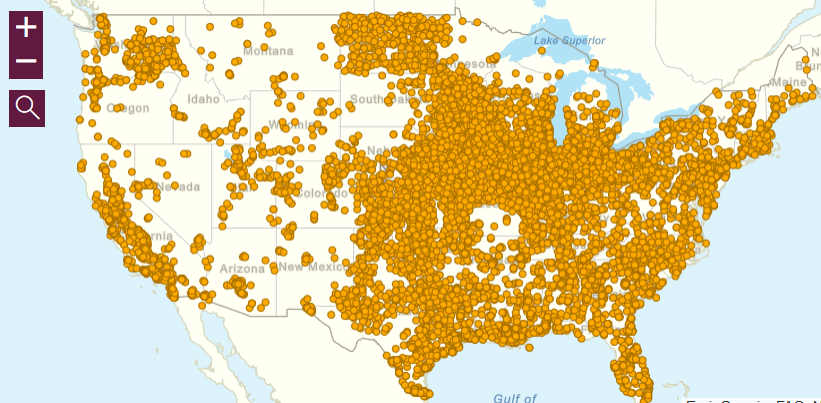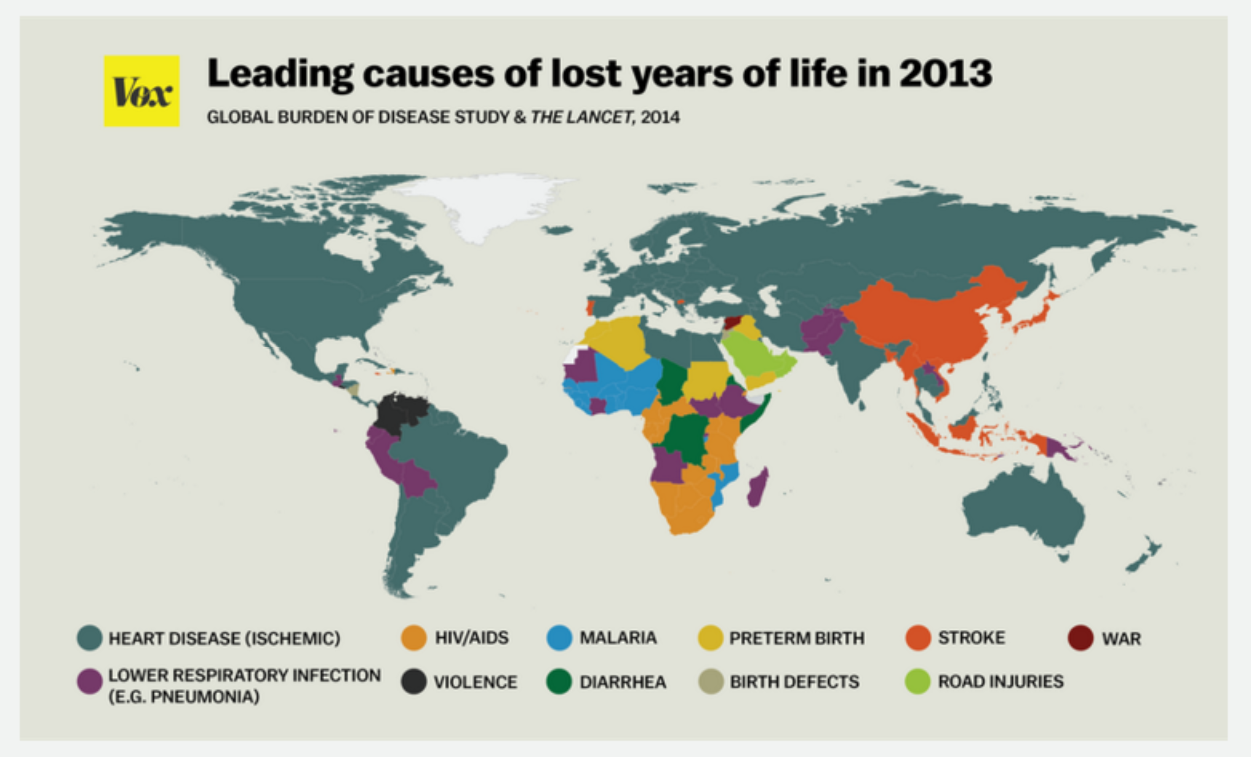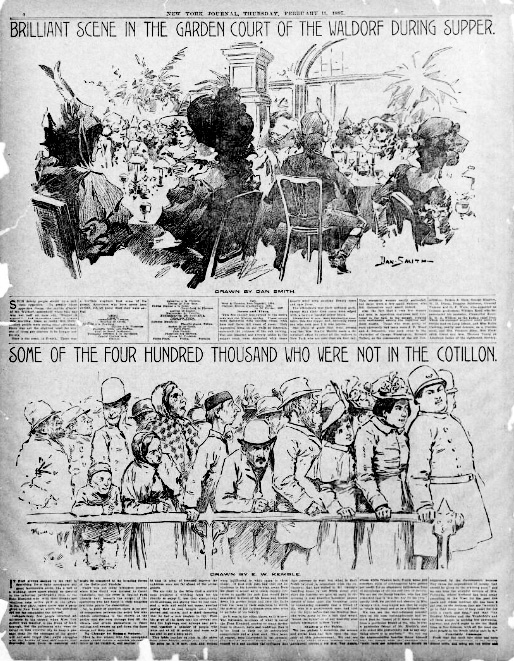Orientation
Why study crowds, masses and movements?
It is tempting to imagine that as socialists we must know a great deal about crowds, masses, and in medieval thought individual meant inseparable, that is indivisible. People were defined as individuals by reference to the groups of which they were members. Group membership defined their very identity as individual units. Farr treats individualism as a product of the Renaissance and Reformation, stressing the emerging traditions of religious, political and economic liberalism. However, unlike Farr, Ivana Markova argues that it was monasticism and chivalry that contributed most towards strengthening the development of individualism in feudal society. Nikolai Berdyaev has pointed out that the individualism of the Renaissance and Humanism brought man to the limit of his ability to withstand the uncertainty and loneliness into which the Renaissance and Humanism threw him.
With the rise of capitalism, the concept of the individual came to be divorced from its original intrinsic connection with the social community. This tendency can be seen in the work of Hobbes, Adam Smith and John Stuart Mill. In psychology, individualism became connected to the Associationist theory of John Locke and the hedonistic psychology and utilitarian theory of Jeremy Bentham and James Mill. Individuals came to be treated in isolation and abstraction. Individualism in its most extreme form is present in social Darwinism in the 1870s in the work of Herbert Spencer who was much more influential in the US than he was in Britain. This individualism continued with pragmatism in the late 19th and 20th centuries and with behaviorism beginning just before World War I.
The majority of the main issues to which psychology is addressing itself has been concern with the isolated individual rather than the individual as a member of a particular social group. With the aggregate of strangers thrown together in lab experiments this became the setting in which social psychologists explored what social life was supposed to be about. What is missing is the social psychology of real groups that an individual was part of, including occupational groups, church groups or extended families. These are called “reference” groups.
Reference groups
So far, the social-individual dialectic has been understood as a group mind (crowd psychology) or a social contract (individualism). The third way to put a frame around the social-individual polarity is to think of society not as a group mind but as a reference group. According to JD Greenwood (What Ever Happened to the Social in Social Psychology) the term “reference group” was introduced by Hymen and then developed in 1951 by Newcombe. An individual’s reference groups were ongoing groups with whom the individual has a commitment and history with and whose norms they are loyal to. They had shared norms and differentiated roles and they met in the same time and place. Social psychologists who represent this school included William McDougall, Omar Sheriff, William Thomas and Solomon Asch. These theorists claim that understanding social life should begin with reference groups with whom the individual has a foundation, not strangers with whom one has no commitment or history.
Reference groups are contrasted to aggregates of strangers who are thrown together for an experiment. Aggregates are statistical groups. Reference group theory also argued against conceiving of the social life as a mystical social mind hovering above individuals. The early psychologist William McDougall embraced this socially embodied individuality of the communitarians. He thought that the social groups were the source of individuality. McDougall rejected both the social mind theories of group super-individuality and also opposed social aggregate theory. This intrinsic form of group identity was followed by Baldwin, Cooley, Mead and Goffman.
For crowd or social mind theorists individuals think, feel and act differently in the physical presence of other individuals than they do in physical isolation from other individuals. For collective mind theorists like Le Bon, the mechanism of influence is grounded in hypnosis, imitation and contagion. For reference group theorists, social psychological-states are distinct from individual psychological states but not separate from them. Social life in any concrete case is the mind of an individual in a social group. Historically, in the philosophy reference group, the tradition of the individual as being socially embedded is in the philosophy of Vico and in the idealist philosophy of Hegel, Green and Royce.
Why was reference group theory lost in the shuffle?
Greenwood asks why the original form of the social in American psychology was abandoned. He gives two reasons:
- It became associated with crowd theories about the emergent properties of supra-individual group minds. This was against the beliefs of those committed to empiricism, experimentalism and individualist social psychology.
- It challenged principles of autonomy and rationality – the moral and political individualism most common in American psychology.
Demonization of Collective Life
Interestingly, around the same time individualism was understood in its most extreme form, any kind of group life or collective behavior was treated as if:
- it was completely separate from the individual; and,
- it contained all the negative tendencies such as irresponsibility, irrationality, violence and pleasure-seeking animality.
There was the tendency of some American social psychologists to follow Le Bon and Tarde in equating social behavior with the irrational and emotional behavior of crowds. Le Bon and Tarde completely overlooked and suppressed the altruistic picture of the behavior of collectivities perpetuated by crowd theorists.
Between the first and second World War the empiricist behaviorism of Floyd Allport argued there is nothing in the social world that is not first in the minds and actions of individuals. Allport maintained that social phenomena can be explained only in terms of psychological phenomena of individuals (opposite of Durkheim). Other behaviorists besides Allport denied that when people come together to create a social world, whatever the result, it is no more than the sum of individual wills. Crowds do not have a nervous system or an introspective faculty.
The following table is a summary which contrasts the three ways social psychologists have contrasted the nature of the relationship between the individual and society.
Three Ways to Understand the Relationship Between Society and Individual
| Category of comparison | Aggregates
(Yankeedom) |
Reference groups
(Yankeedom) |
Social mind
(Europe—France, Germany, Italy) |
| Definition | Populations of individuals that merely have some property in common and do not represent themselves as a social group | Members are bound by a history of interaction. Shared forms of cognition, emotion and behavior. They represent themselves as a social group | Society as a whole is like a social mindwhich is more than the sum of individuals
|
| Examples of types of groups | Demographics of class, race, age groups, gender | Class, race, age groups, gender
|
Strangers in crowds |
| Strangers in labs | |||
| Time, place displacement | Dispersed in space—masses
Or face to face as strangers |
Same time and place or over time
Organic groups |
Same place and same time
Crowds |
| Range of social cognition | Public opinion or opinion in focus groups | Tradition and group beliefs spread historically | Hypnosis, group contagion
|
| What is social learning? | Interpersonal learning in face-to-face
Experimental situations |
Intrinsic learning
by passing on traditions |
Imitation
Regression
|
| Historical origins | Social contract theory of Hobbes, Locke, Hume | Goes back to Herder, Goethe, Hegel | Late 19th and Early 20th century crowd psychologists |
| Theorists | Allport
Behaviorism Lazarsfeld -mass communication, Gallup polls |
McDougall,
Cooley, William Thomas Mead, Sheriff, Asch
|
Le Bon, Levi-Bruhl, Tarde, Wallis, Wundt, Durkheim
|
| Research methods | Experimental
groups
Statistical surveys
|
Experimental Local groups—Families, religious or occupational groups
Professional organizations
Experiments in social psychology may require special adaptation of experimental method |
Eye witness accounts |
| Typical questions | How do different social classes feel about the importance of leisure time?
|
How are Catholic, working class families different from Methodists and Baptists families? | How do crowds behave in revolutionary situations? |
Right-Wing Crowd Psychology: Crowds as Super-Minds
How to understand crowds
Philosophers of conventional sociology at the end of the 19th century thought that crowds were not a separate or new phenomenon. Rather they were seen as fleeting gatherings outside of social institutions which resulted in temporary chaos between social classes. Émile Durkheim and Marx emphasized reason or class interest to explain why people gathered in crowds to begin with. Liberal politics saw the masses as an epiphenomenon which would pass away as education, technology and a more just distribution of wealth would even things out. Crowds were still equated with the general population and not considered “mobs”. Liberals saw gatherings as no more than a collection of individuals.
Whether conservative or liberal, mainstream philosophers of sociology were social Darwinists whose ideas of a liberal society were of individuals who took care of themselves. “Crowd” psychologists claimed Darwinian evolution showed that progress was a slow process and any sudden changes based on strikes or armed conflict was a throwback to pre-modern times. Crowds were like Herbert Spencer’s undifferentiated matter. Crowd psychologists perceived crowds in a much more sinister light.
Crowd psychologists were united in rejecting sociological theories such like Durkheim and Marx because they felt they left out the emotions and unconscious motivation of people. If you could not depend on what people intended, then was what is really driving them below the level of consciousness? Crowd psychology was interested in the behavior of crowds, the behavior of leaders and the relationships between them. Crowds were here to stay and the sooner we understand them the better. For crowd psychologists individuals were both more than and less than the sum of their parts. Until the 1960s social psychologists accepted right-wing crowd theory even though it was not based on any research. (Social Psychology, Delamater, Myers, Collett; David Miller Introduction to Collective Behavior and Collective Action). Please see my article for more detail about crowd psychologists. Ruling Class Fears of the Day of Reckoning: Historical Causes for the Biases Against Crowds
Left-Wing Crowd Theory: Crowds as reference groups
Up until the 1960s social psychologists continued to examine crowds in an unfavorable light following the thinking of Taine, Sighele and Le Bon. To the extent they tolerated collectivities at all they followed research on mass public opinion. But in the early 1960’s Carl Couch began to have his students study the work of George Rudé on the French Revolution which showed crowds in a more favorable light. Crowds were workers, not criminals, and the behavior of workers was somewhere in between derelict and heroic.
From collective behavior to collective action
In 1968 Clark McPhail began to take his students into situations where crowds had assembled and got them to engage in participatory research. Later, in 1997 he took a team of over sixty trained observers to a very large “Stand in the Gap” rally of the Promise Keepers on the National Mall in Washington DC. They used paper, pen, film and videotape to record people’s activities at political as well as sports and religious events. This was something that early crowd theorists never had done. The results challenged all seven of the myths I described in my previous article. The myths are:
- Irrationality
- Emotionality
- Suggestibility – mindless behavior
- Destructiveness
- Spontaneity
- Anonymity
- Unanimity of purpose
McPhail tried to indicate this difference by distancing himself from the word “crowds”, calling collectivities “gatherings.”
McPhail classifies gathering according to their behavioral composition. The most inclusive category is that of prosaic gatherers, where behavior is simple – shoppers at malls, people waiting in lines for rides, at amusements parks, gatherings at store openings and spectators at fires and arrests. Less common are demonstration gathering – political demonstrations, sports rallies and worship services… Even less common …are state ceremonial gatherings such as inaugurations, royal weddings and state funerals. (Intro to Collective Behavior, 43)
Meanwhile theorists who studied social movements pointed out that up until now all theories of collectivities saw crowds either acting as solitary individuals or reacting to circumstances outside themselves. For scholars such as Charles Tilley, William Gamson, McAdam and Lipsky, people who considered themselves part of social movements, come into a crowd with a plan. Any major demonstration against a war requires months of planning on the part of the organizers. Secondly, being in a crowd and acting in a crowd is not an end in itself, but a means to gather more people to swell the movement long after the particular crowd disperses. Because of this, movement scholars began to change the name of their study from “collective behavior’ (which is more passive) to “collective action”.
Within the field of social movements there were two tendencies. “Political process” theory is interested in how people come to frame their discontent into ideas. What is it in the nature of some negative events which makes people put up with them, and what is it about negative events that make them seem abusive? In other words, what events will make people more likely to throw down the gauntlet?
“Resource mobilization theory” tries to answer the question of how movements succeed through networks of movement organizations. What kind of material resources are necessary and sufficient in order to succeed?
Right-Wing vs Left-wing Theories of Crowds
Spontaneous vs planning
There are roughly six theories on crowd psychology – two conservative, two liberal and two radical. However, for our purposes we will contrast them between conservative and radical theories. Collective behavior theories are conservative because they focus on a crowd’s reaction to events – which are often spontaneous. Collective action theories emphasize what crowds do to initiate activity and these activities often involve planning.
The difference between crowds and everyday life
A second major difference between the theories is that conservative collective behavior theories think there are some major qualitative differences between how people act in crowds and how they are in everyday life. They imagine that crowds bring out a degenerative side of people. They would look approvingly at William Golding’s book Lord of the Fliesand and say that is what happens in crowds. Collective action theorists think that there is no qualitative difference between how people act in crowds and how they are in everyday life. Whatever there is that is sinister in human behavior it is just as likely to happen in everyday life.
How unified are crowds?
Conservative theories of crowd behavior imagine that the individuality of people melts down in crowds and the crowd is easily unified because people are easily emotionally involved. This is because crowds exert a hypnotic effect which then spreads like contagion. Theories of collective action argue that the individuality that people have when they enter a crowd stays with them during the events that happen in crowds. People disagree about actions to be taken and crowds can remain divided. It takes real work and skill for leaders of collective action to unify a crowd.
Masses vs movements
Theories of collective behavior are most at home studying masses. Masses are people who are not necessarily located in the same space, but which are happening at the same time. Examples are fads, rumors, urban legends, fashions, crazes and mass hysteria. The most famous case of mass hysteria was Orson Wells’ radio broadcast of Martians having landed.
Mass behavior doesn’t bring out the best in people. People are shown to be petty, superficial, acquisitive and easily aroused. However, collective action theorists tend to study crowds in more serious circumstances as part of movements. Movements are actions that might take place in present time and space but also at different times and different places. Movements can be cross-cultural and historical. Protests, strikes, work-stoppages and boycotts are inclusive of crowds and yet go beyond them.
Sports crowds, natural disasters and riots
Both collective behavior theorists and collective action theorists study sports crowds, natural disasters and riots but come to very different conclusions about them. Collective behavior theorists might focus on hooligans in sporting events and violence both between fans as well as collective frustration resulting from the outcome of a game. When it comes to natural disasters, conservative collective behaviorists will focus on the looting of stores and sexual violence as well as stealing between the victims of disasters. As for riots, conservatives will usually focus on damage to property, the chaos of revolutionary situations and the lack of order. This way of thinking about things is perpetrated by mass-hysteria theory which is based on class fear of the lower classes rather than objective research that has been done.
Collective action theories shine a more favorable light on sporting crowds, natural disasters and riots and they have the research that backs it up. Collective action theorists will marvel at the amount of spontaneous order that occurs in baseball games when tens of thousands of people take the train to a game, watch and enjoy the game peacefully and take the train home without any police intervention needed.
As for natural disasters, research clearly shows that natural disasters tend to bring out the altruistic, pro-social side of people, far more often than they bring out the selfish side. Lastly, collective action contains two pieces of research that must be deeply disturbing to conservative crowd theorists. The first is that the most common instigator of violence in riots are the police. More times than not the presence of police with the threat of coercion and use of force amplifies a tense situation rather than cools it out. The second piece of research shows that riots get results. Though people are endlessly told to vote or to write to your member of Congress, it is after riots that the authorities somehow find the time and money to right wrongs. The Watts riots of 1967 is an example.
Who is drawn to crowds?
Collective behavior theorists with their negative view of crowds naturally think that only unsavory troublemakers are drawn to them. They believe these people are emotionally unstable or even criminals. No self-respecting member of the middle or upper-middle class would tolerate being in a crowd for long. Theorists of collective action point out that there is no particular type of group or individual that is drawn to a crowd. It is true that middle and upper-middle class people would more easily separate from crowds by driving a car. Cars and money can bypass traveling on buses and trains. However, the difference is much less extreme than collective behavior theorists make it seem to be. When it comes to natural disasters while poorer people are likely to be trapped in poorly built homes or buildings, upper middle-class people have also been the victims of floods, fires, tornadoes, hurricanes and earthquakes.
Collectivities and human nature
Conservative collective behavior theorists imagine that crowds bring out only the worst in people, a selfish, desperate and violent side. Collective action theorists say that crowds tend to bring out more extremes of behavior both for better and for worse. Groups and individuals bring out what is most moderate in people. In crowd situations people can be more extreme: selfish and violent on one hand or more altruistic and heroic on the other.
Who determines norms?
Contrary to conservative collective behavior theorists who might say all norms vanish as a person goes from a group to a crowd, moderate, liberal theories of crowds such as emergent norm theories argue that group norms emerge spontaneously as the situation dictates. Collective action theorists argue that in the case of social movements, the leaders initiate norms which are created and imposed by crowd monitors from within the protest movement itself. There may be an expectation from within the movement not to break bank windows or throw rocks. In fact, people who do these things may be labeled FBI agents.
Are members of crowds rootless or do they already have communities?
Collective behavior theorists imagine that the only people who join crowds are rootless individuals drawn to a crowd because they lack community. On the contrary, collective action theories say most people come to crowds with friends, families and sometimes with neighbors. People are not desperately seeking a community. They already have one but just want to expand those communities.
How much monitoring of crowd behavior goes on?
Liberal crowd theorist Herbert Blumer argued that crowds do not monitor their behavior. His circular reaction theory claimed that emotions feed on each other rather and get stuck in an amplifying groove, creating a snowballing effect. Social interaction theorist Clark McPhail points out from his research that crowds do monitor and interpret what is happening, talk to each other about what is going on and change the direction or movement of the crowd as they go.
Are crowds rational?
“No!” say the collective behavior theorists. The size of crowds, their anonymity and lack of continuity makes a crowd act more irrationally because of the noise and emotional euphoria. Collective action theories disagree. Crowds are just as capable of groups and individuals of behaving rationally. Perhaps the best example of this is how orderly and graceful people are at the 5 PM rush hour as they navigate walking towards train stations on foot, weaving in and around others, barely touching them. Another example is how most of the time people assemble and leave going to concerts in an orderly fashion without police presence. Disorderly crowd behavior is the exception to the rule. Newspapers with their slogan “if it bleeds it leads” only point out extremes of crowd behavior. Who ever heard of a news headline, “42,000 People at Yankee Stadium Arrive Home From the Train Station With no Incidence of Violence”?
Crowds as super-minds vs crowds as reference groups
Let us return to the three ways the relationship between society and individual can be understood. The perspective of crowds as collective behavior corresponds to crowds as having a super-mind. This is because crowds are understood as deeply irrational, with emotions easily aroused and easily spread (contagion). Crowds consist of suspicious strangers who easily melt down through hypnosis, imitation and regression.
Crowds as collective action corresponds to crowds as reference groups. Why? Because people in crowds consist of reference occupational groups, religious groups and neighbors from the same region. These folks carry the same values into crowds they had in reference groups. Thus, they bring with them their shared history and values which is not so easily thrown off kilter when they celebrate as part of a crowd in a victory in a sports game or while attending a music concert. They’re sharing norms and differentiated roles which come to the fore in emergency situations such as natural disasters.
Theoretical perspectives
The most conservative collective behavior theories are mass hysteria theories which were supported by Orrin Klapp. Mass hysteria theories also harken back to the right-wing crowd theorists such as Taine, Sighele and Le Bon. More moderate theories are that of Gabriel Tarde, Herbert Blumer and David Park. Liberal theories include Smelser’s value-added theory and Turner and Killian emergent norm theory. Clark McPhail really blew the roof off of conservative and moderate crowd theory with his social interactionist defense of crowds as purposive, focused, creative and for the most part non-violent. Radical crowd theories include the resource mobilization theory of JD McCarthy and Mayer N. Zald. Political process theory of McAdam, Gamson and Lipsky both have their focus on social movements.
How good is the research?
All crowd research is not just about the present. Georg Rule opened the door with archival research on the French revolutionary crowds. Charles Tilly did the same thing for the 500 years of European revolutions. Gamson did some ingenious work on social protests about what works and what doesn’t work. There have also been participant observations of religious cults (John Lofland), UFO cults and the current Tea Party movement.
Unfortunately, theories of collective behavior do not have comparable research methods. They mostly rely on conservative ruling class fears of crowds which shows up in newspaper anecdotes, reports by the authorities such as police reports and eyewitness accounts which are notoriously unreliable. Please see the table below for more vivid comparisons of the two theories.
Conclusion
I began this article by posing the question of how to think of the relationship between individual and society. One is in the image of society as a kind of group mind superimposed over society. The second way is to think of society as an aggregate which is no more than the sum of its parts. The most grounded approach is to understand society as reference groups. In the second part of my article, I do a comparison between crowd theories based on crowds as a super-mind (collective behavior theories) compared to crowds as reference groups (collective action) theories. Crowds as gatherings are like reference groups applied to macro-social psychology.
Two Perspectives on Crowd Theory
| Collective Behavior | Category of Comparison | Collective Action |
| What collectivities do in reaction to events (spontaneous) | Mode of Conduct | What collectivities do when they plan events
|
| Qualitative differences
Collectivities behave in unusual ways |
What is the difference between collective behavior and behavior in everyday life? | There is no qualitative difference Crowds act normally most of the time
|
| Crowds are easily unified because people are aroused and these emotions spread like contagion | How unified are crowds? | They are pluralistic, not unified People disagree and it takes work to unify them |
| Rumor, Urban legends
Fads, fashions, crazes Mass hysteria—radio UFO landings (War of Worlds) Diseases |
Examples: Masses | Collective action does not usually study mass behavior
More interested in crowds and social movement |
| Sports’ crowds, UFO reports
Natural disasters—floods, fires, tornadoes, hurricanes, earthquakes, riots Social movements, political or spiritual |
Examples: Crowds and movements | Sports crowds, UFO reports
Natural disasters Protests Riots Strikes Work stoppages Boycotts Social movements—political or spiritual |
| Crowds draw trouble-makers or people who are emotionally unstable or criminals | Who is drawn to crowds? | There is no type of social group or individual that is drawn to crowds compared to groups
|
| Crowds bring out the worst characteristics in people,
characteristics that would not show up in the same individuals or groups Selfish, desperate violence side |
What is the relationship between collectivities and human nature? | Crowds bring out the best and worst in people
Groups bring out what is moderate in people
Selfish, violent, selfless and heroic |
| Norms are created spontaneously as the situation unfolds (Emergent norm theory) | What determines norms? | Norms can be created before events occur |
| Strangers, people who are rootless and have no communities | Composition of collectivities | Families, friends, neighbors |
| Blumer’s circular reaction
Emotions build in a snowballing effect |
How much monitoring of behavior goes on? | Crowds monitor and interpret what is happening and can change direction |
| Size, anonymity and lack of continuity in time makes crowds act more irrationally | The place of rationality | Crowds are as rational as other social formations. |
| Mass hysteria theory (Le Bon
Tarde, Blumer, Park, Klapp) Value Added theory (Smelser)
Emergent norm (Turner, and Killian) |
Theories | Social interactionist
(McPhail)
Resource Mobilization theory (McCarthy and Zald)
Political process theory (McAdam, Gamson Lipsky) |
| Anecdotes (Mackay)
Reports by authorities. Newspapers, eye witnesses |
Research | Archival (Rude – French Revolution)
Gamson – (social protest) Tilly (revolutions |
| Participant observation—
Religious Cults –Moonies (Lofland) UFO Cults Tea Party Film, video, records (McPhail) |
• First published at Socialist Planning Beyond Capitalism
The post Crowds, Masses and Movements first appeared on Dissident Voice.This post was originally published on Dissident Voice.
















































/https://public-media.si-cdn.com/filer/80/1b/801b5790-de77-4f5a-be6f-c82dd073fbd5/keller.jpg)

